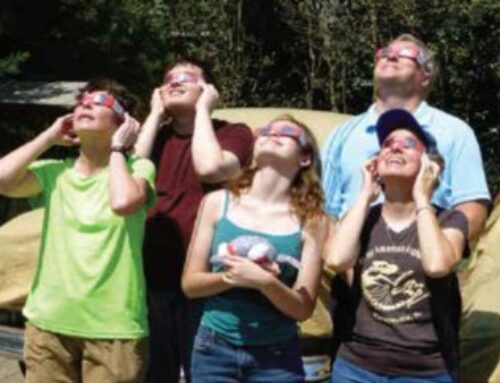(This article originally appeared in the TAU-USA Spring 2020 Issue #100)
OUR NATIONAL ARCHIVES:
IDENTIFYING, ORGANIZING AND PRESERVING
By Sharon Dale, OFS
 Last November, I flew to St. Bonaventure University in New York to have a first look at our National Archives, located in the lower level of St. Francis Hall. At first look I thought, “Oh my, look at all these boxes!” Indeed, there were 237 boxes labeled by number.
Last November, I flew to St. Bonaventure University in New York to have a first look at our National Archives, located in the lower level of St. Francis Hall. At first look I thought, “Oh my, look at all these boxes!” Indeed, there were 237 boxes labeled by number.
The room was clean and comfortable, dimly lit, and looked to be safe and secure for our precious Secular Franciscan records. Boxes were stored on sturdy shelving units and no box was stored on the floor. Temperature, lighting, cleanliness and safe storage are important when a “home” for archives is being considered.
What are archives?
Archives are important documents and artifacts that need to be preserved. They are as diverse as the institutions and people they serve. They are located in federal, state, and local governments, colleges and universities, religious institutions, businesses, hospitals, museums, and historical societies—wherever it is important to retain the records of people or organizations. Included in archives are important letters, photographs, films, audio and video recordings, very important manuscripts, business meetings, and so on.
As the National Archivist of OFS-USA, I am responsible for selecting pertinent records, arranging and naming them, and ensuring the long-term preservation of the collection. When needed, I can assist researchers and plan exhibits and other out-reach programs.
Why is it important to identify and organize records?
An archivist is more than a historian—more like a museum curator. I take the minutes of OFS national meetings, the correspondence to and from our International Order, the continued work of our various national commissions and committees, the elections of regional officers, reports from Quinquennials and a hundred (only slightly exaggerating) other sources that are sent, and create files. These files will be stored alphabetically for easier future access, then placed into numbered boxes. Only books that have been written to memorialize important OFS national events will also be kept as archived matter. You know from your workspace at home, filing bills coming in and payments being made, emails to be answered and so on, that one must be organized. If not, the inevitable “I can’t find…” becomes your wail.
What about preservation?
Taking care of the records tagged as important at the national level, as well as being the archivist/ secretary at the regional level is essential to assure their longevity. At the regional level annual reports, documents of establishment, visitation reports, pictures of fraternity events and so on should be stored.
The area chosen should be well-ventilated, safe and secure, with low to no light. Other members of your regional council should be aware of and approve the space chosen. If archived material must be stored in a basement, there should be no humidity issues. All boxes should be archival (bank boxes are fine). Every-day cardboard boxes should not be used, as they aren’t sturdy enough for long-term storage. Boxes should be identified as OFS material. So many records are lost because family members look at unmarked boxes as “throw-aways.”
It is most desirable is to have records scanned into a computer so that there is not only hard-copy, but in case of possible “lost items,” your fraternity would have the electronic backup.
Looking ahead
I’m looking forward to the work ahead in our National Archives. Sharon Deveaux, my predecessor, has done a great job in acquiring mountains of documents and interesting artifacts of our early years, first as Franciscan provinces, then as regions. A special place will be established for non-paper items such as reels of film from the old television series Hour of St. Francis, old scapulars and cords, burial garments and tunics, profession crosses and various Third Order ribbons and medals. My priority will be to make sure all files are itemized and properly labeled in boxes. After getting access to a scanner, my hope is to provide an electronic backup of all paper documents.
It is the hope of National Historian Tom McNamara and I to have a “museum” of sorts at our upcoming Quinquennial in 2021, where we will have documents and artifacts available relating to the early years of the Secular Franciscan Order in the United States.
****************************************************************************
Archives Mission Statement
(Quoted from an undated document in the archives.)
✤ The Secular Franciscan Order in the United States is an organization consisting of a National Fraternity, 31 regional fraternities, many local fraternities and more than 17,000 members. Its history includes many personal and institutional activities, functions, ministries and events which demonstrate and encourage Franciscan spirituality and the vocation to be followers of Christ in the footsteps of St. Francis of Assisi, according to our Rule.
✤ The Archives… serves as the main repository for the historical documents, official records, photographs, books, letters, artwork, memorabilia and many other materials that pertain to the history of the Order in the United States. The establishment of the Archives is in fulfillment of Article 6.3 of the National Statutes.
✤ The purpose and mission is to actively collect existing materials, appraise materials for historical significance, organize material into a cohesive collection, ensure the physical care and preservation of the collection, and to facilitate scholarly interpretation and use of the collection.




Leave A Comment